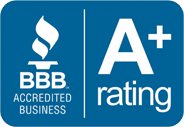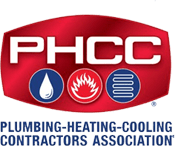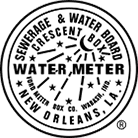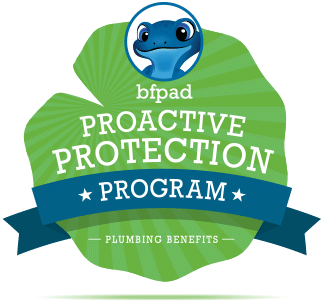
Top 10 Common Plumbing Issues in New Orleans
Do you know what to do when plumbing issues arise in New Orleans?
Plumbing problems are a common headache for homeowners and can escalate quickly if not addressed. From leaky faucets to severe pipe bursts, these issues can disrupt daily life and cause significant damage.
In areas like Harahan, River Ridge, and Kenner, unique local factors such as climate and infrastructure can impact plumbing systems. Understanding these challenges and knowing when to call a professional can save you time, money, and stress. Whether it’s a minor drip or a major flood, being informed is your first line of defense against plumbing problems.
Understanding Plumbing Issues
Common Causes of Plumbing Problems
Plumbing issues can arise from various sources, often resulting from wear and tear or environmental factors. One of the most common causes is pipe corrosion, which occurs over time as water reacts with the metal in the pipes. This reaction can cause the pipes to weaken and eventually leak.
Another frequent issue is clogged drains. These clogs can be caused by a buildup of hair, soap scum, grease, or food particles. Additionally, the local climate in New Orleans, with its high humidity and heavy rains, can exacerbate plumbing problems. The moist environment can accelerate the rusting of pipes and promote the growth of mold and mildew, which can damage pipes and fixtures.
Impact of Local Climate and Environment on Plumbing
New Orleans’ unique climate significantly impacts plumbing systems. The city’s high humidity levels and frequent heavy rains can cause extensive wear on plumbing materials. Furthermore, the risk of flooding, particularly during hurricane season, can lead to severe plumbing issues such as sewer system backups and burst pipes.
Soil movement due to the fluctuating water table can also stress underground pipes, causing them to crack or shift. Being aware of these local environmental factors can help homeowners take preventive measures to protect their plumbing systems.
Plumbing Issue #1. Leaky Faucets
Signs of Leaky Faucets
Have you ever heard of the persistent drip of a leaky faucet?
This common plumbing issue is more than just a minor annoyance. Signs of a leaky faucet include constant dripping sounds, water pooling around the base, and a sudden increase in your water bill. These symptoms are not only irritating but can also lead to higher water bills and potential water damage if not addressed promptly.
Causes of Leaky Faucets
The most common causes of leaky faucets are worn-out washers, O-rings, or valve seats. Over time, these small components can deteriorate due to regular use and the mineral content in the water. As these parts wear out, they lose their ability to form a tight seal, allowing water to drip through even when the faucet is turned off. Understanding these causes can help in identifying the appropriate solution.
Plumbing Issue #2. Clogged Drains
Common Causes of Clogged Drains
Clogged drains are a frequent nuisance in many households. The primary causes of clogs are usually everyday materials that accumulate over time. In bathrooms, hair and soap scum often combine to create stubborn blockages. In kitchens, grease and food particles are common culprits, as they can build up in the pipes and restrict water flow. Additionally, foreign objects accidentally flushed down the toilet or washed down the sink can lead to severe clogs.
Prevention Tips
Preventing clogged drains involves a few simple habits. In the bathroom, use drain covers to catch hair and other debris before they enter the pipes. Regularly cleaning the drain covers and ensuring that only water and soap go down the drain can help maintain clear pipes. In the kitchen, avoid pouring grease down the sink.
Instead, let it solidify and dispose of it in the trash. Rinse plates and cookware thoroughly to remove food particles before washing them in the sink.
Plumbing Issue #3. Running Toilets
How to Identify a Running Toilet
A running toilet is usually easy to identify: you’ll hear the continuous sound of water filling the tank, or you may notice an increase in your water bill. Sometimes, the toilet might seem to run for a few moments after flushing and then stop, only to start again later. These are clear signs that the toilet is not functioning properly and is wasting water.
Common Causes of Running Toilets
The most common causes of running toilets include a faulty flapper, a worn-out fill valve, or an improperly adjusted float. The flapper, which seals water inside the tank, can become worn or misaligned, allowing water to leak into the bowl. The fill valve, responsible for refilling the tank after a flush, can wear out over time.
Lastly, if the float, which controls the water level in the tank, is set too high or too low, it can cause the toilet to run continuously.
Plumbing Issue #4. Low Water Pressure
Reasons for Low Water Pressure
Low water pressure can be frustrating, especially when it disrupts your daily routines like showering or washing dishes. Several factors can contribute to low water pressure in homes. One common cause is mineral buildup within the pipes, which can restrict water flow. This is particularly prevalent in areas with hard water.
Another cause can be leaks within the plumbing system. Even small, hidden leaks can significantly reduce water pressure. Faulty fixtures, such as clogged or old aerators on faucets and showerheads, can also impede water flow. Additionally, problems with the municipal water supply or main water shut-off valve can affect water pressure throughout your home.
Impact on Daily Activities
Low water pressure can affect various household activities. Showering may become less effective and enjoyable, washing dishes can take longer, and appliances like washing machines and dishwashers may not operate optimally. Over time, these inconveniences can add up, making it essential to address the underlying causes of low water pressure.
Plumbing Issue #5. Water Heater Issues
Common Water Heater Problems
Water heaters are essential for comfort in any home, but they can encounter several problems. One common issue is no hot water, which is often due to a faulty thermostat or heating element. If the thermostat isn’t functioning correctly, it won’t signal the heating element to warm the water.
Additionally, strange noises like popping or rumbling sounds can occur due to sediment buildup at the bottom of the tank. This sediment can reduce the efficiency of the heater and lead to damage over time. Leaks around the water heater can also be a serious concern, indicating either a faulty valve or a corroded tank that needs immediate attention.
Maintenance Tips
Regular maintenance can help prevent many common water heater problems and extend the unit’s lifespan.
Flushing the Tank: Periodically flushing the tank to remove sediment buildup is one of the most important maintenance tasks. This process involves draining a few gallons of water from the heater to clear out the sediment.
Inspecting the Anode Rod: The anode rod helps prevent tank corrosion by attracting corrosive elements in the water. It should be checked annually and replaced if it’s heavily corroded.
Setting the Thermostat: Keep the thermostat set to 120 degrees Fahrenheit to prevent overheating and reduce the risk of scalding. This setting is also energy efficient and can help lower your utility bills.
Plumbing Issue #6. Sewer System Backup
Warning Signs of a Sewer System Backup
A sewer system backup is a serious plumbing issue that requires immediate attention. Warning signs include:
Multiple Clogged Drains: If several drains in your home, such as sinks, toilets, and showers, are clogged simultaneously, it might indicate a blockage in the main sewer line. This is more serious than an isolated drain clog and needs prompt action.
Gurgling Sounds: Strange gurgling noises from the drains can signal a backup. These sounds occur when air is trapped in the pipes and pushed through the water, indicating a blockage.
Foul Odors: Unpleasant smells around your home, especially near drains, can be a clear sign of a sewer backup. These odors are caused by sewage and waste not properly flowing through the sewer lines.
Causes of Sewer System Backup
Several factors can lead to a sewer system backup. Tree Roots: Tree roots can invade and grow into sewer lines, causing blockages and damage. Aging Pipes: Older pipes can deteriorate and collapse, leading to blockages and backups.
Heavy Rainfall: Excessive rainfall can overwhelm the sewer system, causing backups into homes. Additionally, flushing inappropriate items like wipes, diapers, and grease down the drain can cause significant clogs and backups.
Plumbing Issue #7. Burst Pipes
Causes of Burst Pipes
Burst pipes can cause significant damage to a home and are often due to a combination of factors. One of the primary causes is freezing temperatures. When water inside the pipes freezes, it expands, creating pressure that can cause the pipes to burst.
Corrosion is another common cause. Over time, pipes can weaken and deteriorate due to the water’s chemical reaction with the metal. High water pressure can also lead to burst pipes, as the excessive pressure can strain the pipes beyond their capacity, leading to ruptures.
Immediate Actions for Burst Pipes
If a pipe bursts in your home, taking immediate action is crucial to minimize water damage:
Shut Off the Water: The first step is to turn off the main water supply to prevent further flooding. The main shut-off valve is usually located near the water meter or where the main water line enters the house.
Drain the System: Open all faucets and flush toilets to drain any remaining water in the pipes. This helps to relieve pressure and reduce the amount of water that can escape from the burst pipe.
Contain the Leak: Use towels, buckets, or other containers to catch leaking water and prevent it from spreading. If possible, use a pipe clamp or a piece of rubber and a clamp to temporarily seal the burst pipe until professional help arrives.
Call a Professional Plumber: Contact a licensed plumber immediately to assess the damage and repair the burst pipe. They can also inspect your plumbing system for any other potential weak points and provide recommendations for preventing future bursts.
Plumbing Issue #8. Tree Root Intrusion
Understanding Tree Root Intrusion
Tree root intrusion is a significant plumbing issue, especially in areas with mature landscaping. As trees grow, their roots naturally seek out sources of water, often infiltrating underground pipes. This can lead to severe blockages, pipe damage, and even complete pipe collapse if not addressed promptly.
Signs of Tree Root Intrusion
Detecting tree root intrusion early can save homeowners from extensive damage and costly repairs. Common signs include:
- Slow Draining: Water drains slowly from sinks, bathtubs, and toilets, often indicating a partial blockage in the sewer line.
- Gurgling Noises: Unusual sounds from the drains can signal that roots have penetrated the pipes and are causing obstructions.
- Sewage Backups: Frequent backups, particularly in the lowest drains in the house, suggest that roots may have fully blocked the sewer line.
- Lush Patches in the Yard: Areas of the yard that are greener or grow faster than the surrounding grass might indicate a leaking sewer pipe where roots have invaded.
Preventing and Addressing Tree Root Intrusion
Preventing tree root intrusion involves both proactive landscaping and regular plumbing maintenance:
- Plant Wisely: When planting trees, consider the location of your sewer lines. Opt for species with less aggressive root systems and plant them far from your plumbing infrastructure.
- Regular Inspections: Schedule regular plumbing inspections, particularly for older homes or those with large trees nearby. Video inspections can identify root intrusion before it becomes a major issue.
- Root Barriers: Install physical root barriers when planting new trees to prevent roots from reaching the sewer lines.
- Chemical Treatments: Use safe, professional-grade chemical root treatments that can discourage roots from growing near pipes without harming the trees or the environment.
- Professional Cleaning: If you suspect tree root intrusion, contact a professional plumber to perform a thorough cleaning of your sewer lines. They can use specialized equipment like hydro-jetting to clear out the roots and restore proper function.
Tree root intrusion can be particularly challenging in New Orleans, where the lush landscape and mature trees are common. By understanding the signs and taking preventive measures, homeowners can protect their plumbing systems from this common and potentially damaging issue.
Plumbing Issue #9. Sump Pump Failure
Signs of Sump Pump Failure
A sump pump is a vital device for preventing basement flooding, especially in areas prone to heavy rainfall like New Orleans. Recognizing signs of sump pump failure can help you address issues before they escalate. Common signs include:
Unusual Noises: Strange noises such as grinding or rattling can indicate mechanical issues within the pump.
Constant Running: If your sump pump runs continuously without stopping, it might be due to a malfunctioning float switch or a problem with the discharge line.
Water in the Basement: Obviously, the presence of water in your basement, particularly around the sump pit, is a clear indication that the sump pump is not functioning properly.
Frequent Cycling: A sump pump that frequently turns on and off could be experiencing a problem with the float switch or an undersized basin.
Tips for Maintaining Your Sump Pump
Regular maintenance is crucial for ensuring your sump pump operates effectively.
Check the Power Source: Ensure the pump is plugged in and receiving power. Consider installing a battery backup system to keep the pump running during power outages.
Test the Pump Regularly: Pour a bucket of water into the sump pit to make sure the pump activates and removes the water efficiently. This test should be performed every few months.
Inspect the Discharge Line: Ensure the discharge line is free from obstructions and directs water away from your home’s foundation. Clear any debris and check for freezing during winter months.
Clean the Sump Pit: Remove any debris or sediment that may have accumulated in the sump pit. This prevents blockages and ensures smooth operation.
Plumbing Issue #10. Hard Water Problems
Effects of Hard Water on Plumbing
Hard water contains high levels of minerals like calcium and magnesium. These minerals can cause various plumbing problems over time. One significant issue is mineral buildup within pipes and appliances. This buildup can restrict water flow, leading to low water pressure and inefficient appliance operation.
Scale formation on fixtures, such as faucets and showerheads, is another common effect, resulting in unsightly white deposits that are difficult to remove. Additionally, hard water can cause soap scum buildup in showers and bathtubs, making cleaning more challenging and less effective.
Solutions to Manage Hard Water Issues
Managing hard water issues involves both preventive measures and corrective actions.
Water Softeners: Installing a water softener is one of the most effective ways to combat hard water problems. Water softeners work by exchanging calcium and magnesium ions with sodium or potassium ions, thereby reducing the hardness of the water. This process helps prevent mineral buildup in pipes and appliances, extending their lifespan and improving their efficiency.
Descaling Agents: For those who don’t have a water softener, using descaling agents can help remove mineral deposits from fixtures and appliances. Regularly applying a descaler to your faucets, showerheads, and appliances can help keep them free of scale buildup.
Regular Cleaning: Frequently cleaning your plumbing fixtures with vinegar or a commercial descaler can help manage minor scale deposits. Soaking showerheads and faucet aerators in vinegar overnight can dissolve mineral buildup and restore proper water flow.
Appliance Maintenance: Regular maintenance of water-using appliances, such as water heaters and dishwashers, is crucial. Flushing your water heater periodically to remove sediment can enhance its efficiency and lifespan. Check manufacturer recommendations for specific maintenance tips.
Plumbing issues are a common concern for homeowners, especially in areas like New Orleans, Harahan, River Ridge, and Kenner.
By understanding the causes and solutions for common problems such as leaky faucets, clogged drains, running toilets, low water pressure, water heater issues, sewer system backups, burst pipes, faulty water lines, sump pump failures, and hard water problems, you can take proactive steps to maintain your plumbing system.
Regular maintenance and timely repairs can save you from costly damage and ensure a smooth-running household. Remember, when in doubt, don’t hesitate to contact a professional plumber to address any serious plumbing issues.
FAQs about Plumbing Issues
- What should I do if I have a plumbing emergency?
In a plumbing emergency, the first step is to shut off the main water supply to prevent further damage. Then, call a professional plumber immediately to address the issue. Avoid using any water fixtures until the problem is resolved.
- How often should I get my plumbing inspected?
It’s recommended to have your plumbing system inspected annually. Regular inspections can help identify potential issues early, preventing major problems and costly repairs down the line.
- Are plumbing issues more common in older homes?
Yes, older homes often have outdated plumbing systems that may be prone to leaks, corrosion, and other issues. Regular maintenance and timely upgrades can help mitigate these problems.
- What are the signs of a serious plumbing issue?
Signs of a serious plumbing issue include persistent low water pressure, multiple clogged drains, foul odors, unusual noises from the pipes, and unexplained wet spots or water damage. If you notice any of these signs, contact a professional plumber immediately.
- Can I fix plumbing issues myself, or should I call a professional?
While minor issues like small clogs or leaks can often be fixed with DIY methods, more complex problems should be handled by a professional plumber. Attempting to fix major issues yourself can lead to further damage and higher repair costs.













